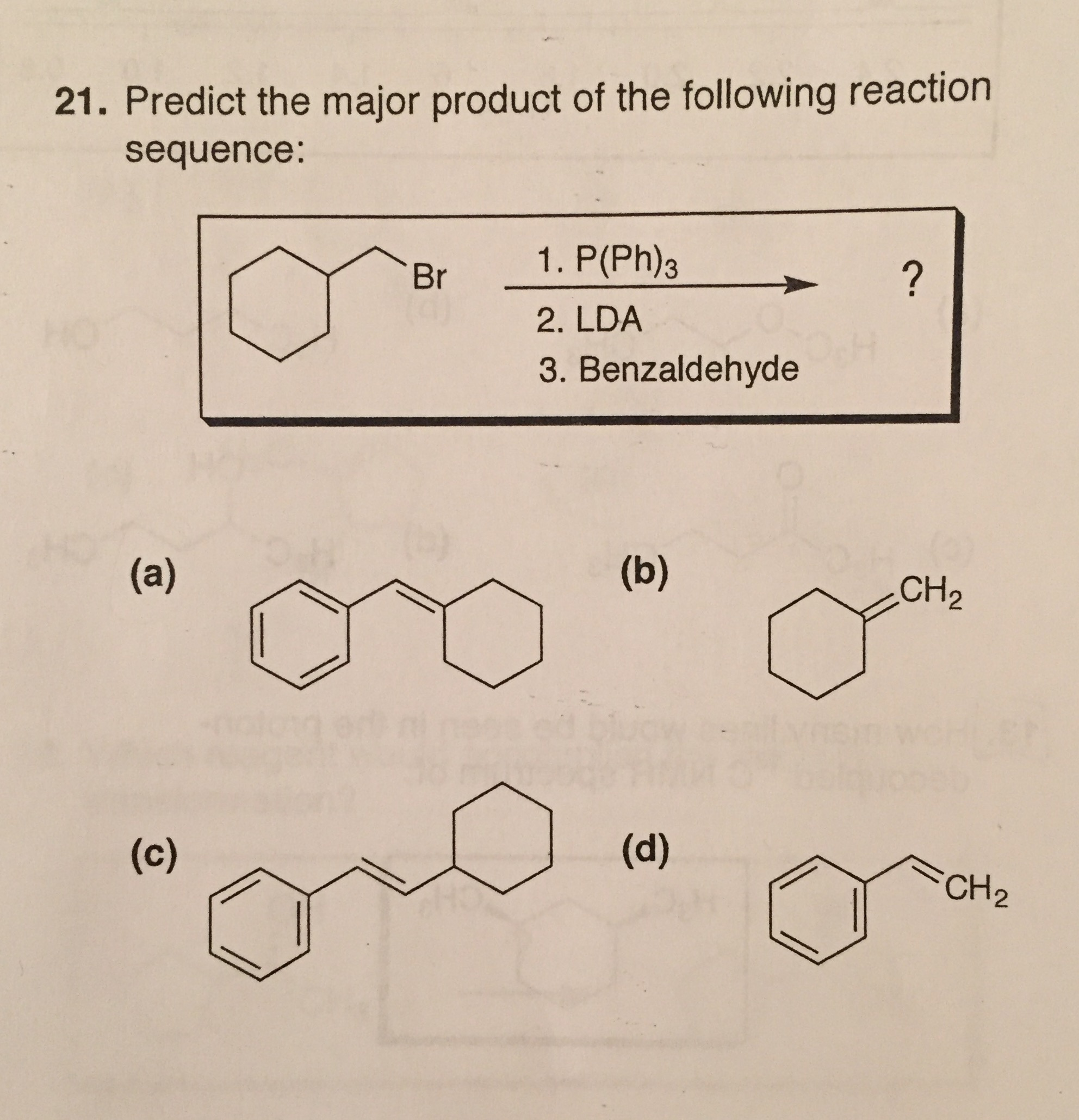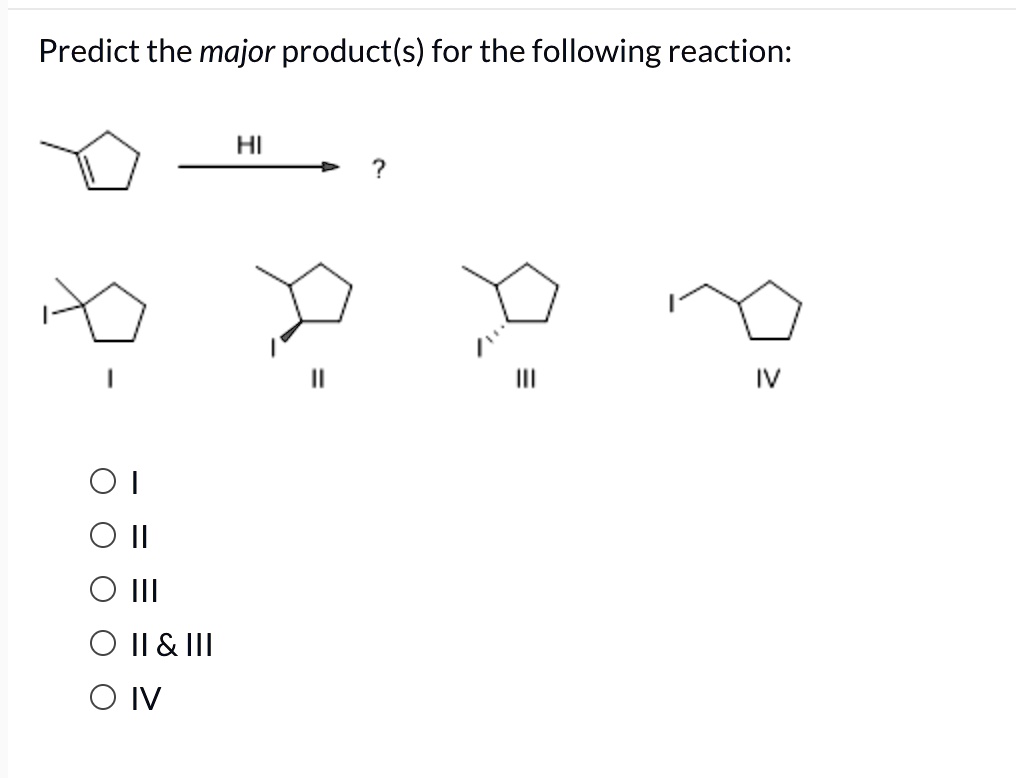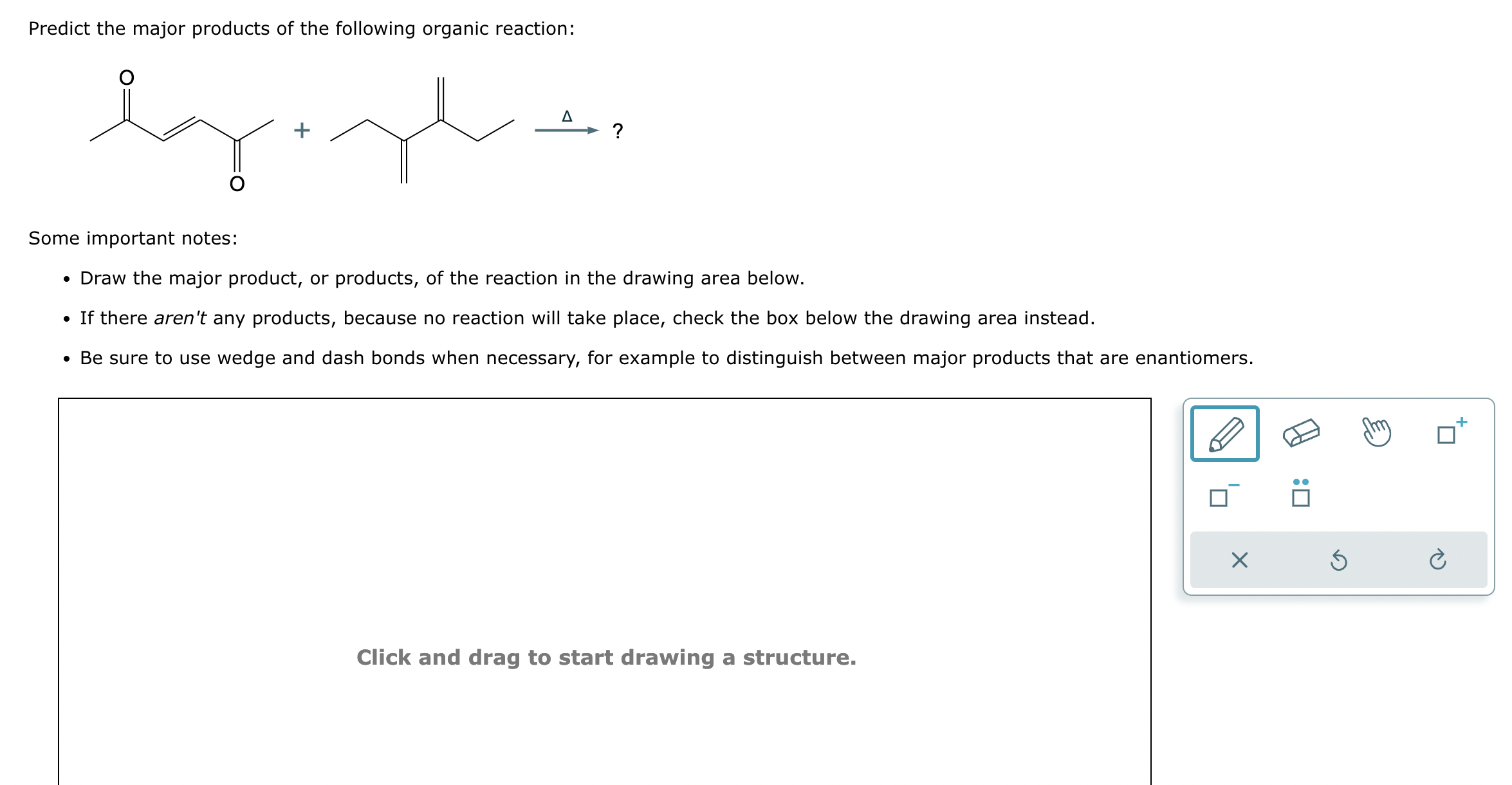Predict The Major Product For The Following Reaction.

Panic spread through chemistry labs worldwide today as a seemingly simple reaction stumped researchers and students alike: Predict the major product for the following reaction. The online chemistry community is ablaze with debate, theories, and outright frustration.
The ambiguous nature of the reactant(s) and unspecified reaction conditions have triggered widespread academic chaos, impacting exam schedules and research deadlines globally.
The Mystery Reaction
The reaction in question, deliberately obscured to maintain academic integrity, lacks crucial details. The missing data renders standard prediction methods useless, leading to contradictory predictions from expert chemists.
Dr. Anya Sharma, a leading organic chemist at the University of California, Berkeley, described the situation as "unprecedented" in a statement to this publication. She noted that such fundamental ambiguity is rarely seen outside intentionally designed academic puzzles.
Initial Reactions
Online forums like Chemistry Stack Exchange and Reddit's r/chemistry exploded with activity within hours of the problem's appearance. Theories ranged from simple substitution reactions to complex rearrangements involving exotic intermediates.
Many students reported encountering the problem on crucial examinations. A petition demanding clarification from exam boards has already garnered over 10,000 signatures.
Impact on Research
The ambiguity has reportedly bled into active research projects. Several research groups are said to be re-evaluating their approach towards reactions with unknown products.
A postdoctoral researcher at Harvard University, who wished to remain anonymous, stated: "We're halting all reactions until we can be sure we aren't heading down a rabbit hole of undefined product mixtures."
The situation highlights the fragility of chemical predictability in the face of incomplete information.
The Key Factors Missing
The most significant point of contention revolves around the reaction conditions. The lack of information about temperature, solvent, and catalyst(s) prevents the use of established mechanistic reasoning.
Furthermore, some interpretations of the reactant structures have opened the door to multiple reactive sites. This adds layers of complexity to the prediction process.
Without these key parameters, accurately predicting the major product becomes almost purely speculative.
Expert Opinions Diverge
Professor Dr. Kenichi Tanaka of Kyoto University proposed a radical mechanism involving a previously unreported intermediate. He published a paper, but it has already faced intense scrutiny.
Meanwhile, Dr. Maria Rodriguez at the Universidad Complutense de Madrid advocates for a more conservative approach. Her model favors known reaction pathways.
The stark contrast among experts underscores the scale of the uncertainty surrounding the reaction.
Who is Responsible?
The source of the reaction remains a subject of intense debate. Some believe it originated from an academic setting, deliberately designed to test understanding of fundamental principles.
Others suggest it might be the result of an error or a miscommunication within a chemical database or teaching materials. This is supported by the fact that some users are encountering it on online chemistry quizzes.
Regardless of the origin, the widespread confusion has led to calls for standardization in chemistry education and research.
Immediate Repercussions
Several universities have postponed exams containing the problematic reaction. Professors are being forced to adapt course plans and offer alternative assessments.
The situation is causing widespread anxiety among students preparing for upcoming assessments. Online study groups are struggling to cope with the unpredictable impact of the unknown product.
What's Next?
A coalition of leading universities and chemical organizations is forming a task force to investigate the reaction. They aim to develop a standardized approach for handling reactions with ambiguous conditions.
The task force will also be responsible for issuing an official statement regarding the educational implications of the event. They intend to provide guidelines for examiners on the usage of similar problems in the future.
The outcome of this crisis may have profound implications for the future of chemistry education and research methodology. The emphasis on clarity and precision will likely be intensified, to prevent this level of confusion in the future.







